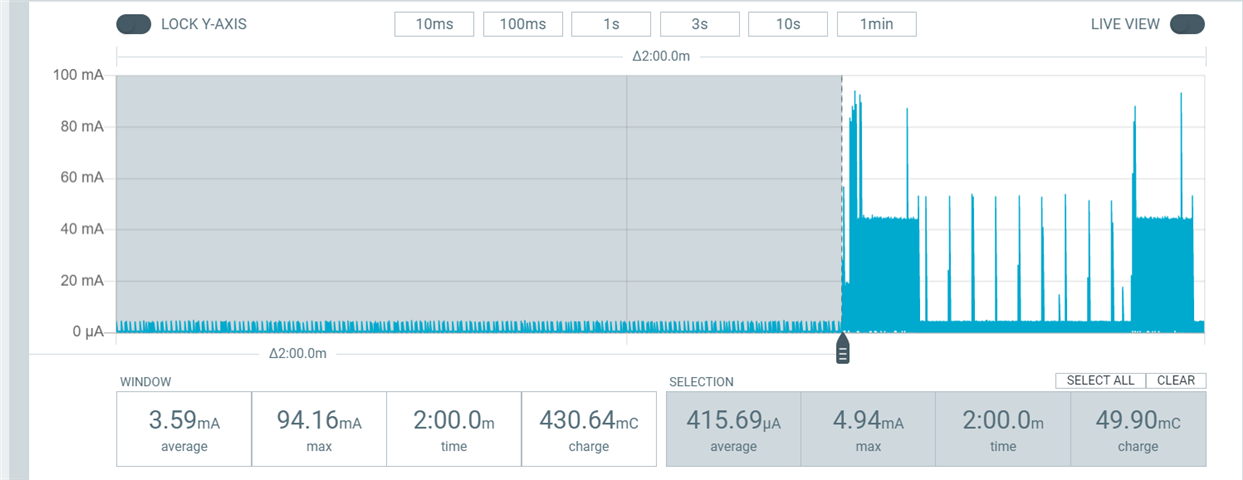Hello there,
I am currently testing queue mode within the LwM2M example with the nrf9160. Now I have made some measurements with the PPK2. Thereby I was surprised that the floor current, while the client should be in PSM, is very high with about 400 uA. Is this value realistic for this sample?
Previously I had measured 2.4uA with the UDP sample (which is very optimized, but still). So I think maybe there is some setting enabled that I overlooked that is drawing the current. How can I improve the power consumption in this regard? I have already tried to apply the settings from the UDP sample.

I am using SDK v2.0.2 and the nrf9160 (Rev2).
Many thanks,
Kurt Simon


